Pool Pumps And Chemical Supplies
Pool Pumps And Chemical Supplies – Jones Plumbing Plus
Pool Pumps and Chemical Supplies: A Comprehensive Overview
Introduction
Welcome to an extensive exploration of the world of pool pumps and chemical supplies, essential components that underpin the thriving aquatic industry. This article aims to delve into every facet of this dynamic sector, offering valuable insights for professionals, enthusiasts, and anyone curious about the art and science of maintaining swimming pools. From understanding the fundamentals to uncovering future trends, we will navigate through a wealth of information to demystify the complexities of pool pumps and chemicals.
Understanding Pool Pumps And Chemical Supplies: The Core Elements
Definition: Pool pumps and chemical supplies refer to the equipment and substances necessary for the efficient operation and maintenance of swimming pools. This includes pumps that circulate water, filters that remove impurities, and a range of chemicals to balance pH levels, prevent algae growth, and ensure water sanitation.
Key Components:
-
Pool Pumps: These are the heart of any pool system, responsible for circulating water. They come in various types, such as centrifugal pumps, screw pumps, and positive displacement pumps, each with unique capabilities and applications.
-
Filters: Filters play a critical role in removing debris, algae, and bacteria from pool water. Common types include sand filters, DE (diatomaceous earth) filters, and cartridge filters, offering different levels of efficiency and maintenance requirements.
-
Chemical Supplies:
- pH Regulators: Maintaining the right pH balance is crucial for swimmer comfort and water treatment effectiveness. Acids and bases are used to adjust and maintain this balance.
- Algaecides: These chemicals prevent or eliminate algae growth, ensuring crystal-clear pool water.
- Shock Treatments: Regular shock treatments with chlorine or other sanitizers kill bacteria and break down contaminants.
- Flocculants: They help in the removal of fine particles by causing them to clump together, making it easier for filters to capture them.
Historical Context: The concept of pool pumps has evolved significantly since ancient times when natural springs and simple hand-pumps were used for bathing. The introduction of electric motors in the late 19th century revolutionized pool maintenance, leading to more efficient pumping systems. Chemical treatments for water purification gained prominence during the early 20th century, transforming swimming pools from mere recreational areas to sanitary and enjoyable spaces.
Significance: Proper pump functionality and chemical management are vital for maintaining a clean, safe, and healthy swimming environment. They ensure water quality, prevent health hazards, and extend the lifespan of pool infrastructure.
Global Impact and Trends
The global pool pumps and chemical supplies market is a testament to the universal love for aquatic recreation. Here’s a breakdown of its international influence:
-
Market Size: According to a 2021 report by Market Research Future (MRFR), the market is projected to reach USD 17.6 billion by 2027, growing at a CAGR of 5.5% from 2020 to 2027. This growth is driven by increasing pool installations worldwide and rising disposable incomes in emerging economies.
-
Regional Analysis: North America dominates the market due to its high adoption rate of advanced pool technologies and stringent water quality standards. Europe follows closely, with a focus on energy-efficient pumps and sustainable chemical solutions. Asia-Pacific witnesses rapid growth due to urbanization and a growing middle class, leading to an increase in pool installations.
-
Trends Shaping the Industry:
- Smart Pool Systems: The integration of IoT (Internet of Things) technology is transforming pools into smart environments, allowing remote monitoring and control of pump and chemical systems.
- Eco-Friendly Chemicals: There’s a growing demand for environmentally friendly chemicals that are biodegradable and less harmful to aquatic life.
- Energy Efficiency: Manufacturers are focusing on energy-efficient pumps to reduce operational costs and environmental impact.
Economic Considerations
The economic aspects of pool pumps and chemical supplies paint an intriguing picture:
| Aspect | Description |
|---|---|
| Market Dynamics | The market exhibits seasonal fluctuations, with higher demand during warmer months. Rapid technological advancements drive innovation and competition among manufacturers. |
| Investment Patterns | Commercial and residential pool installations prompt substantial investments in pump and chemical systems. Upgrades to energy-efficient models and smart technology are gaining traction. |
| Economic Impact | The industry contributes significantly to global GDP, creating employment opportunities in manufacturing, distribution, and maintenance services. |
| Cost Analysis | Pump costs vary based on size, type, and efficiency, ranging from a few hundred to several thousand dollars. Chemical supplies represent a smaller but critical expense for ongoing pool maintenance. |
Technological Advancements: Revolutionizing the Industry
Technological breakthroughs have significantly enhanced the capabilities of pool pumps and chemical management:
-
Smart Pumps: These pumps use sensors and IoT connectivity to monitor water quality, adjust flow rates, and notify users of potential issues. They offer precise control and energy savings.
-
Automated Chemical Dosage Systems: Advanced systems now accurately dispense chemicals based on real-time water analysis, eliminating manual adjustments and reducing chemical waste.
-
Remote Monitoring Software: Pool owners and managers can access pool data remotely, allowing for proactive issue resolution and efficient scheduling of maintenance tasks.
-
Predictive Maintenance: AI-driven models analyze pump performance data to predict maintenance needs, minimizing downtime and extending equipment lifespan.
Policy and Regulation: Ensuring Safety and Sustainability
The regulatory landscape plays a crucial role in the responsible use of pool pumps and chemicals:
-
Water Quality Standards: Local and international bodies set guidelines for safe water quality, including maximum levels of contaminants and required chemical treatments.
-
Environmental Regulations: Strict regulations govern the production, distribution, and disposal of chemicals to minimize environmental impact and protect aquatic ecosystems.
-
Energy Efficiency Mandates: Many countries mandate energy-efficient appliances, prompting manufacturers to design pumps with improved efficiency and reduced carbon footprints.
-
Product Safety Standards: Authorities ensure that pool chemicals are labeled accurately and safely, providing essential information for users.
Challenges and Criticisms: Overcoming Obstacles
Despite its advancements, the industry faces challenges that require attention:
-
Chemical Safety Concerns: The handling of chemicals requires careful consideration due to potential health risks. Educating users and implementing safety protocols is vital.
-
Environmental Impact: Traditional chemicals can harm aquatic life and the environment. Developing eco-friendly alternatives while maintaining water quality is a key challenge.
-
Energy Efficiency Gaps: While energy-efficient pumps are growing in popularity, there’s room for improvement in reducing overall system energy consumption.
Solutions and Strategies:
- Enhance user education through comprehensive training programs and accessible resources.
- Foster research into green chemistry to develop safer, environmentally friendly chemicals.
- Encourage industry collaboration to share best practices for energy-efficient operations.
Case Studies: Real-World Success Stories
1. Luxury Resort Pool Rehabilitation
A renowned beach resort in Hawaii faced a challenge with its aging pool system. They invested in a complete pump and chemical management upgrade, implementing smart controls and automated chemical dosing. The result? A significant reduction in maintenance costs, improved water quality, and a happier guest experience.
2. Community Pool Safety Initiative
A local community pool in a suburban area had frequent issues with algae growth and inconsistent pH levels. They adopted a new monitoring system that seamlessly integrated smart pumps and chemical sensors. This initiative led to better water management, reduced chemical usage, and a safer swimming environment for the entire neighborhood.
3. Eco-Friendly Hotel Pool Transformation
A boutique hotel in Europe transitioned its pool maintenance practices to embrace sustainability. They switched to biodegradable chemicals and installed energy-efficient pumps. The result was a dramatic reduction in operating costs and a positive brand image, attracting eco-conscious travelers.
Future Prospects: A Glimpse Ahead
The future of pool pumps and chemical supplies looks promising with emerging trends shaping the industry:
-
Advanced Water Purification: Research into cutting-edge filtration technologies promises even more efficient water purification, removing a wider range of contaminants.
-
Personalized Chemical Solutions: Customized chemical treatments tailored to individual pool needs will gain popularity, ensuring optimal water quality for each unique environment.
-
Integration with Home Automation: Pool systems will increasingly become part of the broader home automation ecosystem, allowing seamless control through smartphone apps and voice assistants.
-
Sustainable and Biodegradable Chemicals: The demand for environmentally friendly chemicals will drive innovation in green chemistry, leading to safer and more sustainable pool maintenance practices.
Conclusion: Swimming Towards a Brighter Future
In conclusion, pool pumps and chemical supplies are the backbone of a thriving aquatic industry, powering millions of swimming pools worldwide. From historical roots to cutting-edge technology, this sector has evolved to meet the diverse needs of users while ensuring water safety and environmental sustainability. As we look ahead, the future holds immense potential for growth, innovation, and enhanced user experiences.
FAQ Section: Answering Your Questions
Q1: What factors should I consider when choosing a pool pump?
A: Consider pump type (centrifugal, screw, etc.), capacity (in gallons per minute), energy efficiency (marked by energy stars), noise levels, and maintenance requirements. Ensure it matches your pool size and water circulation needs.
Q2: How often should I test my pool water chemistry?
A: Daily testing is ideal for pools with heavy usage or harsh climates. Weekly testing is a good practice for average conditions. Testing before and after chemical additions ensures accurate adjustments.
Q3: Are there any eco-friendly alternatives to traditional pool chemicals?
A: Yes, biodegradable chemicals and natural compounds are gaining popularity. These alternatives minimize environmental impact while maintaining water quality. However, they may require different application methods and monitoring strategies.
Q4: How can I reduce the cost of pool chemical maintenance?
A: Regular pool cleaning, proper circulation, and balanced water chemistry help reduce chemical usage. Using automated dosing systems and choosing cost-effective yet effective chemicals can also contribute to savings.
Q5: What are the benefits of smart pool pumps?
A: Smart pumps offer remote control, real-time monitoring, energy efficiency, and predictive maintenance. They simplify pool management, reduce operational costs, and provide peace of mind for owners.

Jones Plumbing Plus: Pool Pumps & Chemicals Experts
Jones Plumbing Plus provides comprehensive pool maintenance services and products. They offer expert advice on equipment and chemicals, ensuring peak…
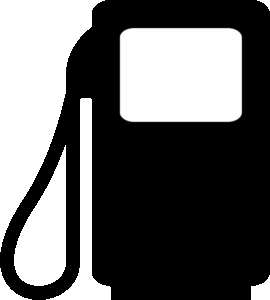
Explore Optimal Pool Pumps & Chemical Supplies at Jones Plumbing Plus
Maintaining a healthy swimming pool relies on both efficient pool pumps and chemical supplies. Pumps facilitate water circulation, while chemicals…
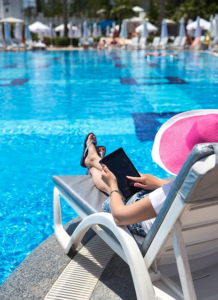
Jones Plumbing Plus: Expert Pool Care Chemicals & Services
Jones Plumbing Plus is your go-to for pool pump and chemical solutions. With years of experience, they offer professional services…

Optimize Pool Care with Jones Plumbing Plus Expertise
Jones Plumbing Plus offers tailored pool pump and chemical solutions for all needs. Our experts guide customers in choosing energy-efficient…

Jones Plumbing Plus: Expert Pool Pump Care & Chemicals
Jones Plumbing Plus offers expert pool pump and chemical services for all types of pools, maintaining clear, safe water with…

Top-Tier Pool Pumps, Chemicals from Jones Plumbing Plus
Jones Plumbing Plus provides top-tier pool pumps and chemicals for all types of pools, offering expert guidance on maintenance and…
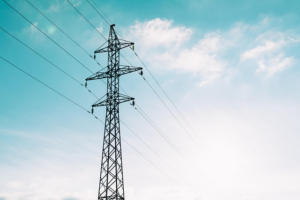
Pool Pumps & Chemicals at Jones Plumbing Plus: Comprehensive Care
Jones Plumbing Plus provides a wide range of pool pumps and chemical solutions for optimal pool maintenance. Their knowledgeable staff…

Affordable Pool Pumps & Chemicals: Jones Plumbing Plus Solutions
Jones Plumbing Plus offers an extensive and affordable selection of pool pumps and chemical supplies to maintain clean water. Their…

Reliable Pool Pumps & Chemicals: Jones Plumbing Plus Expertise
Pool Pumps And Chemical Supplies are essential for maintaining clean, efficient, and safe swimming pools. Jones Plumbing Plus offers a…

Pool Pumps & Chemicals: Expert Guidance from Jones Plumbing Plus
Pool pumps (filtration, circulation, chemical dispersion) maintain water quality and sanitation. Balancing pH levels, alkalinity, calcium hardness prevents algae growth…
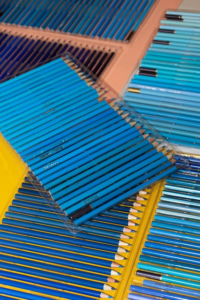
Jones Plumbing: Affordable Pool Pumps & Chemicals Experts
Jones Plumbing Plus provides a comprehensive range of pool pumps and chemical supplies, offering top-quality solutions at affordable prices. With…
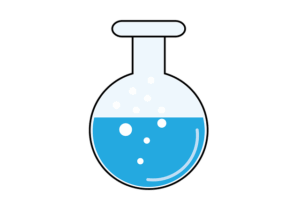
Affordable Pool Solutions at Jones Plumbing Plus
Jones Plumbing Plus provides affordable pool pumps, chemicals, and expert advice for efficient maintenance. Their comprehensive guide helps customers select…
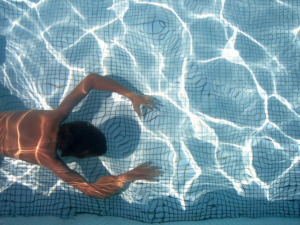
Jones Plumbing Plus: Pool Pumps, Chemicals, Expert Care
Jones Plumbing Plus offers comprehensive pool solutions, including a diverse range of pool pumps and extensive inventory of chemicals to…

Mastering Pool Care: Pumps, Chemicals, Expert Tips for Success
Selecting the suitable Pool Pumps And Chemical Supplies from Jones Plumbing Plus ensures efficient pool management. Our experts guide you…

Expert Pool Pumps & Chemicals: Jones Plumbing Plus Guide
Pool pumps are essential for maintaining clean and safe water, with centrifugal, positive displacement, and jet types catering to diverse…
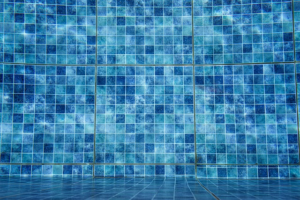
Jones Plumbing Plus: Trusted Pool Pumps, Chemicals, Quality Care
Jones Plumbing Plus offers a diverse range of energy-efficient pool pumps for various needs, from compact in-ground to robust above-ground…

Affordable Pool Pumps & Chemicals: Expert Guide to Care
Jones Plumbing Plus offers a wide range of affordable and high-quality pool pumps and chemical supplies for all types of…

Pool Pumps & Chemicals: Jones Plumbing Plus – Your Trusted Source
Jones Plumbing Plus provides expert pool chemical management, offering tailored solutions for water quality and balance. They guide customers in…

Jones Plumbing Plus: Your Trusted Pool Maintenance Partners
Jones Plumbing Plus offers year-round pool maintenance with a full suite of services and high-quality products. Their expert team provides…
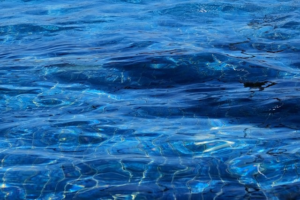
Pool Pumps & Chemicals: Jones Plumbing Plus Expertise
Jones Plumbing Plus provides a comprehensive range of Pool Pumps And Chemical Supplies tailored to diverse pool needs. Their expert…